Before the Fire: Notre-Dame de Paris in Pictures

Aerial view of Paris, c. 1937. Photograph by the Compagnie aérienne française, from the René Huyghe Archive.
See Notre-Dame, center right.

Aerial view of Paris, 1941. From an album of photographs taken by the Luftwaffe Unit 4. (F)/11 in occupied France.
See Notre-Dame, center left.
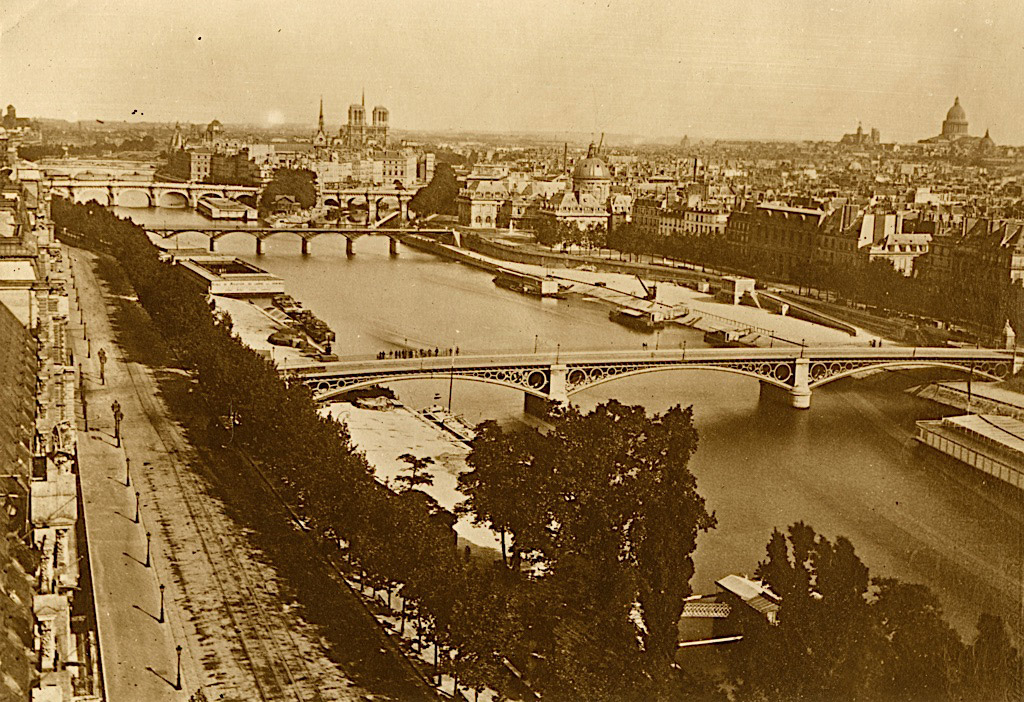
View of Paris, c. 1890. From the Gramstorff Archive.
See Notre-Dame, skyline, center left.

South façade and apse, c. 1890. From the Gramstorff Archive.

West and south facades, c. 1890. From the Gramstorff Archive.
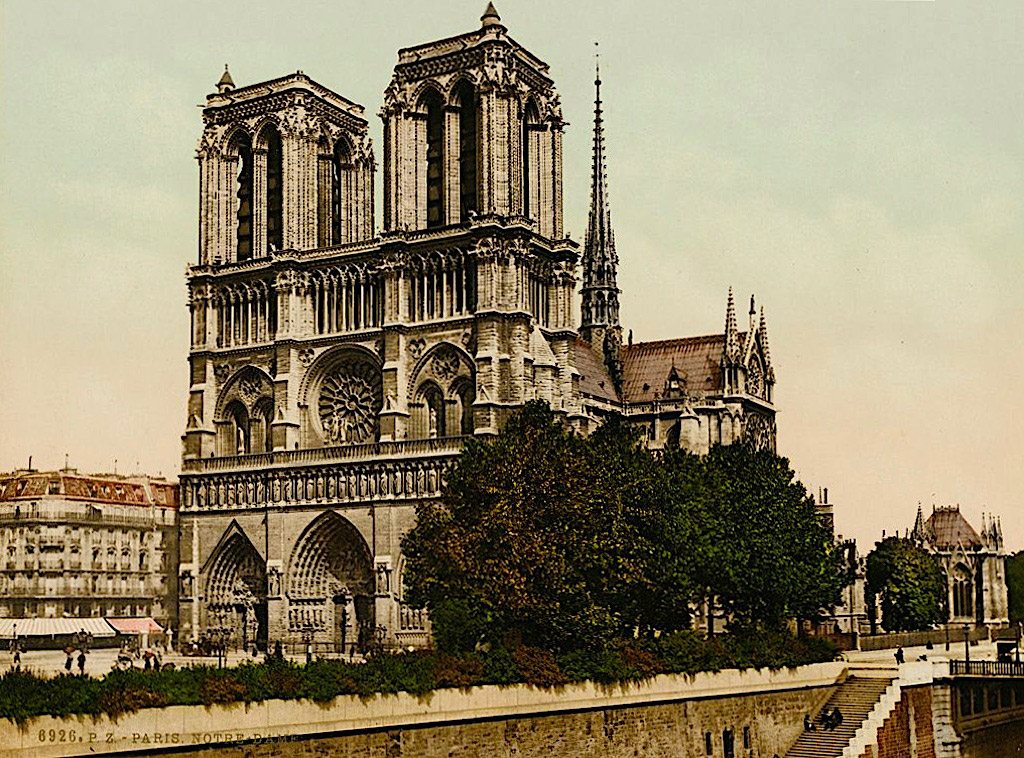
West and south facades, c. 1900. From the album, Souvenir de Paris, 1900, photochrome by Photochrom Zürich.
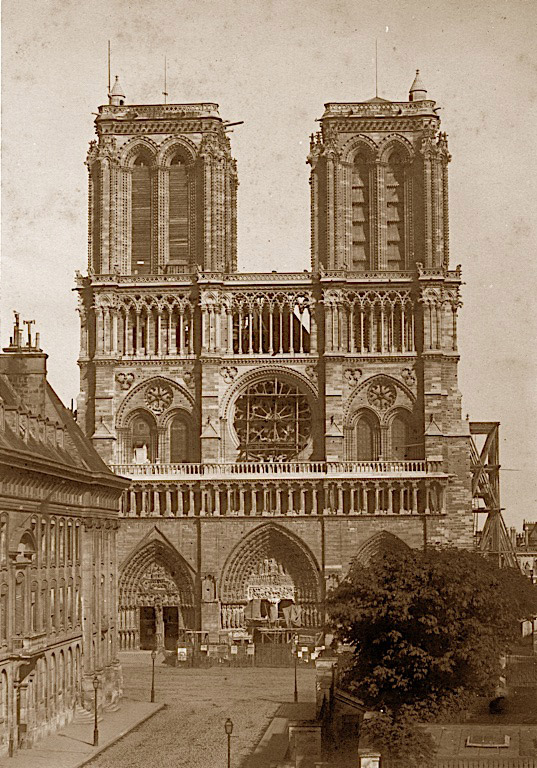
West front of the cathedral, before 1860. Photo by Bisson Frères.
This is the first of three views showing changes during the 19th-century restoration. Note the Galerie des Rois (Gallery of the Kings) arcade, which dates to the first third of the 13th century, with representations of the Kings of Judah. In this earliest of the three photos of the west façade, the arcade is empty, as it was before the architects Viollet-Le-Duc and Lassus began their reconstruction of Notre-Dame in 1844. At that time, none of these statues remained, having been destroyed during the Revolution as symbols of royal despotism. Note, also, that there is no spire; the original was taken down in 1786 because it was unstable.
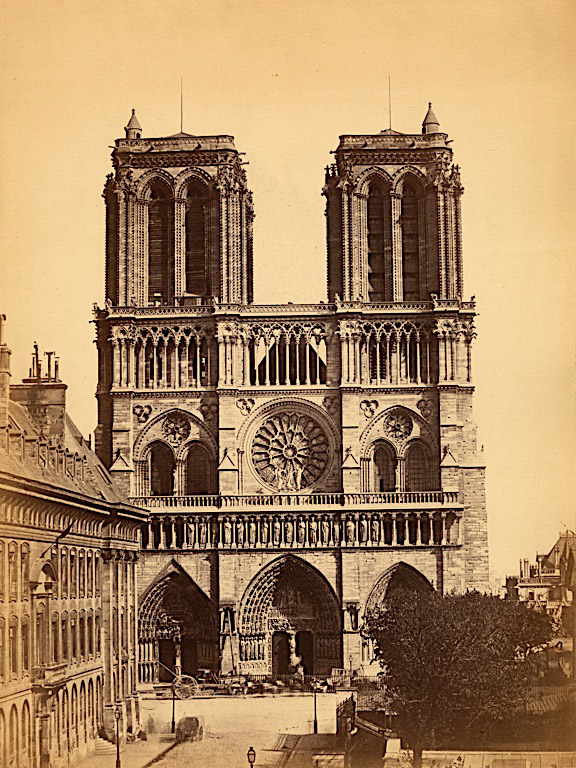
West front of the cathedral, before 1864. Unknown photographer.
In the second photo, many of the new statues are in place on the facade, but not all.

West front of the cathedral, before 1864. Photo by X. Phot. (Neurdein Frères).
In the third photo, all the niches of the arcade are occupied and the new spire appears, dating this photo to c. 1864, when the Viollet-le-Duc restoration was completed.
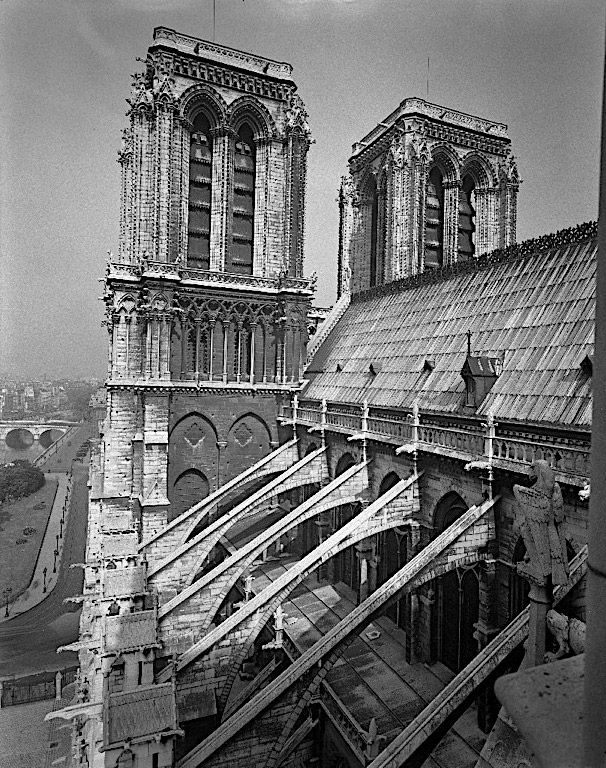
View of the west towers from the roof of the south transept. Photo: Clarence Ward Archive, Arthur Princehorn, photographer, 1932.
The flying buttresses allowed the walls to rise higher and accommodate larger windows.

View of the south transept and choir. Photo: Clarence Ward Archive, Arthur Princehorn, photographer, 1932.
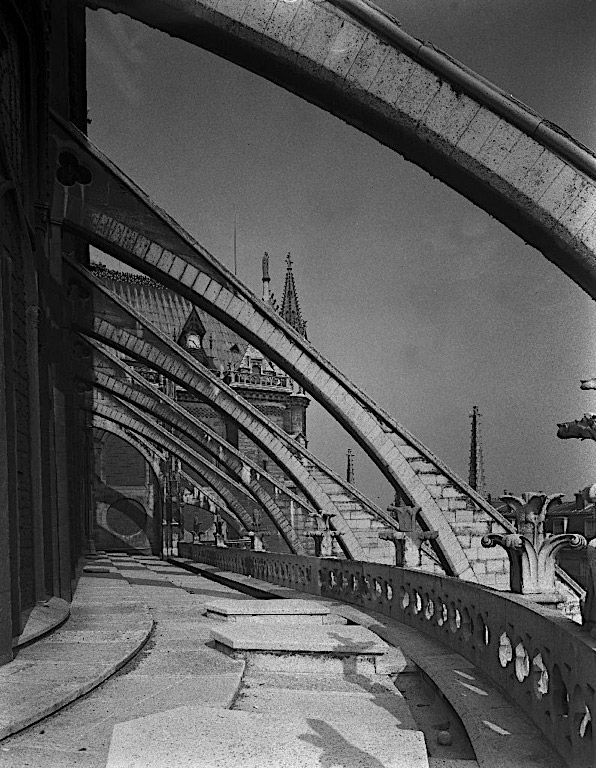
View of the ambulatory buttresses. Photo: Clarence Ward Archive, Arthur Princehorn, photographer, 1932.

View of the apse, north side. Photo by N. D. (Neurdein Frères).

View of the apse, c. 1890. From the Gramstorff Archive.

View of the apse windows. Photo by Bisson Frères.

View of the spire and roof from the north tower of the west front. Photo: Clarence Ward Archive, Arthur Princehorn, photographer, 1929.
Viollet-le-Duc replaced the spire, removed in the 18th century, with a more idealized Gothic spire complete with statues of the 12 apostles and symbols of the four evangelists. These statues were removed for restoration days before the fire began. The spire was topped with a wrought-copper rooster, an unofficial symbol of France, and was recovered after the fire.
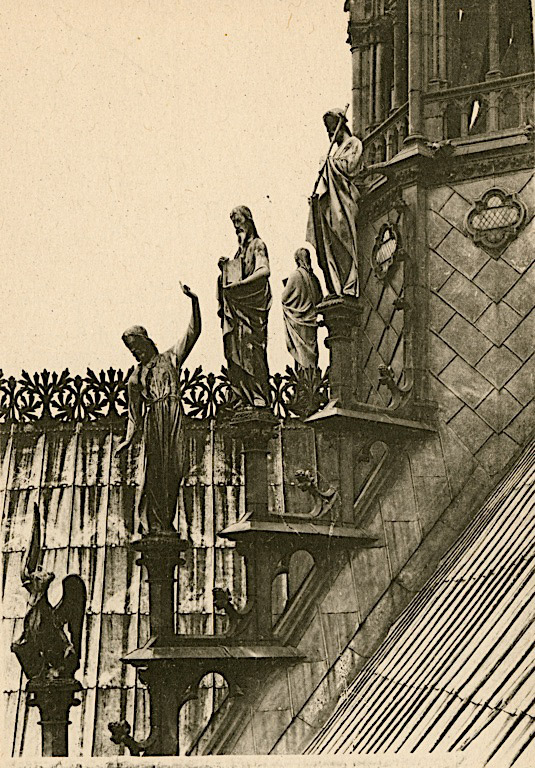
View of the statues ascending to the spire. Photo by N. D. (Neurdein Frères).
The statues of the apostles are accompanied by an eagle, the symbol for the evangelist Mark.

View of the roof and spire. Photo by N. D. (Neurdein Frères).

View of Paris beyond the gargoyles of the west towers. Photo by A. N.

Gargoyles of the west towers. Photo from the René Huyghe Archive.
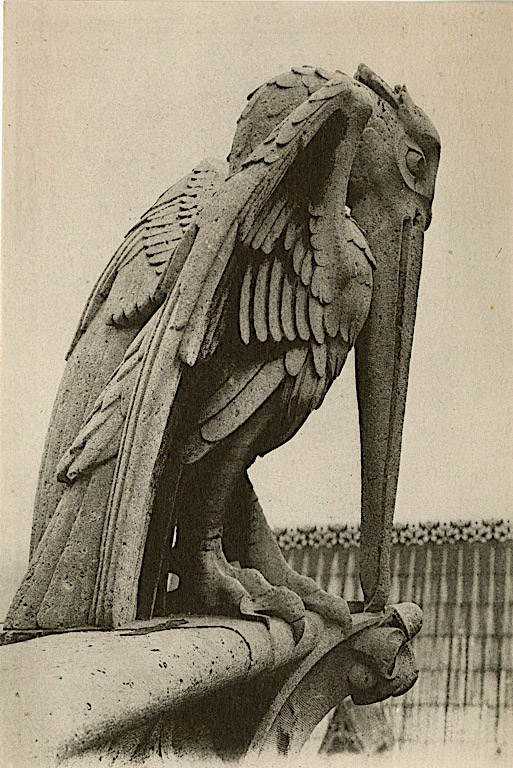
Pelican gargoyle. Photo by N. D. (Neurdein Frères).
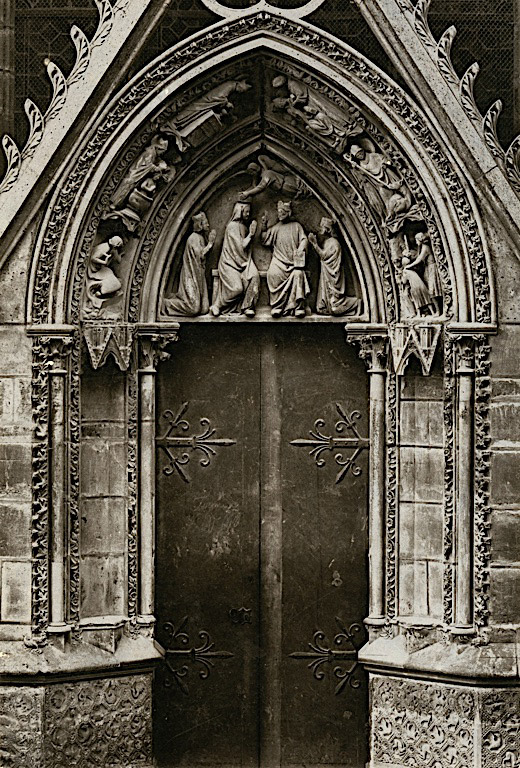
Portal. Photo from the René Huyghe Archive.
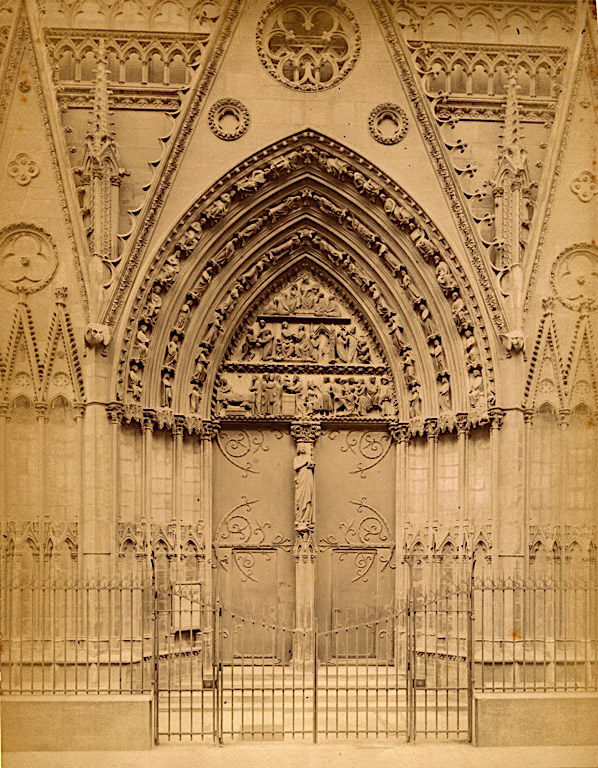
Porte Rouge, third bay of the choir, north side. Photo by N. D. (Neurdein Frères).
The Red Door, or Porte Rouge, was built by architect Pierre de Montreuil in the second half of the 13th century. It connected the cloister, where the canons lived, and the choir of the cathedral to facilitate their access.

West façade, center portal, trumeau. Photo by X. Phot. (Neurdein Frères).
The center pillar of the portal (or trumeau) depicts a figure of Christ teaching. The doors, with their arabesque strap hinges, were restored in the 19th century. An allegory of alchemy is carved in the roundel under Christ’s feet and features a ladder in the center of the composition.

Tympanum of the portal of the south transept. Photo by Henri Le Secq, 1852.
This portal, known as Saint Stephen’s Portal, is dated 1257 in an inscription that also identifies the master-mason as Jean de Chelles. The sculpture program depicts the life and martyrdom of Saint Stephen.

Sculptural decoration of an archivolt, c. 1875. Photo by A. G. (Adolphe Giraudon)
The birds are carved with anthropomorphic facial features.
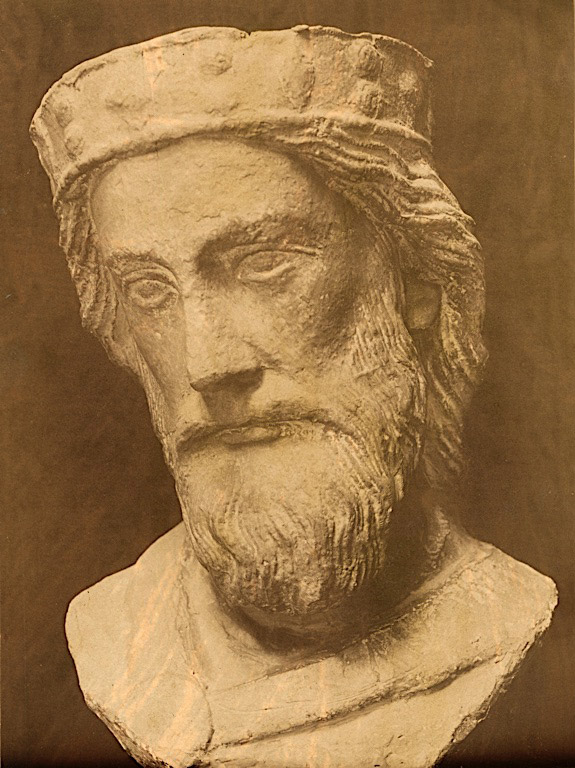
Head of a king, c. 1875. Photo by A. G. (Adolphe Giraudon)
Possibly from the Galerie des Rois. In 1977, 400 fragments of the statuary from Notre-Dame were discovered buried at a site in the Parisian district of the Chaussée d'Antin, including 21 of the 28 heads of kings. They are currently exhibited at the Cluny Museum.

Head of an apostle, c. 1875. Photo by A. G. (Adolphe Giraudon)

Head of a deacon, c. 1875. Photo by A. G. (Adolphe Giraudon)

Saint Marcel baptizing a neophyte, c. 1875. Photo by A. G. (Adolphe Giraudon)

Interior view of the nave and choir. Photo: Clarence Ward Archive, Arthur Princehorn, photographer, 1932.

Interior view of the nave from the choir. Photo by N. D. (Neurdein Frères).
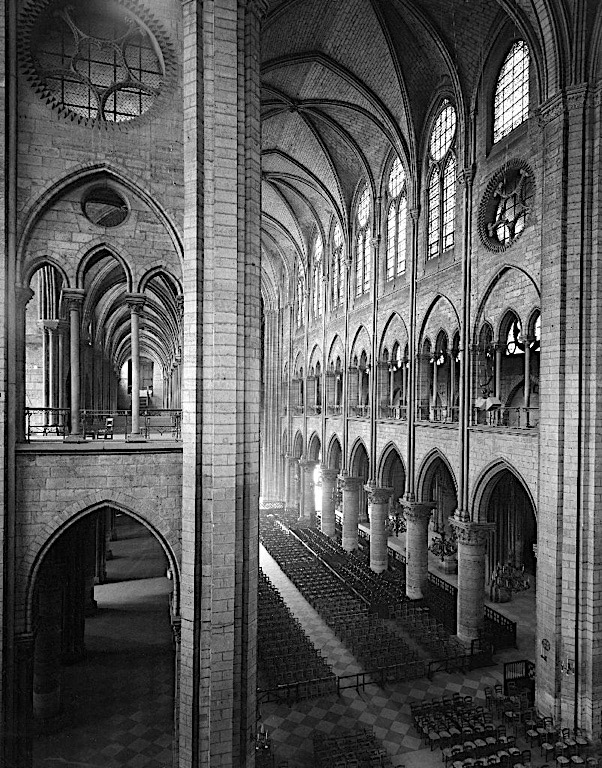
View northwest into the nave from the south transept. Photo: Clarence Ward Archive, Arthur Princehorn, photographer, 1932.

North transept. Photo by Ed. H. Phot.
The North rose window was constructed around 1250.
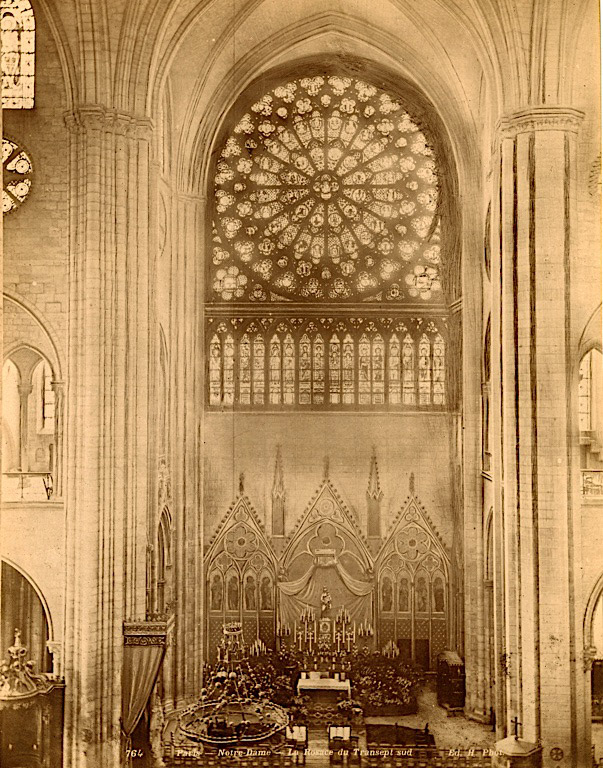
South transept. Photo by Ed. H. Phot.
The south rose window is the largest of the three in Notre-Dame and was built around 1260. It measures over 42 feet in diameter and has 94 medallions featuring the life of Christ. It was donated to the cathedral by King Louis IX.

View from the choir into the nave. Photo by N. D. (Neurdein Frères).
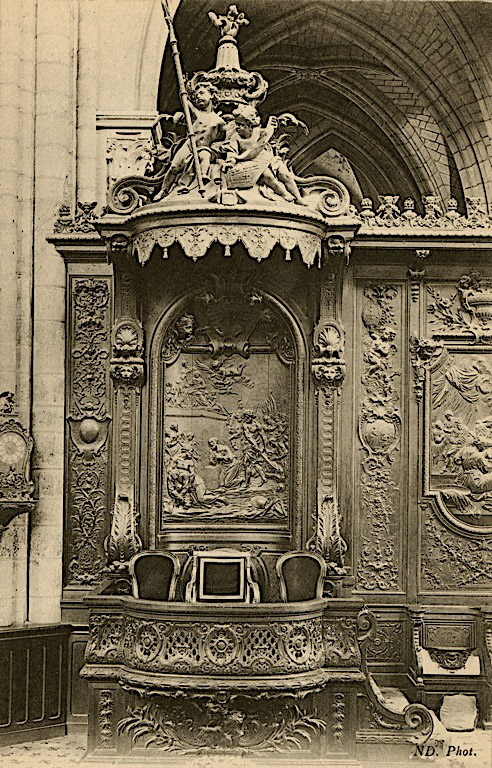
Choir. Detail of bishop’s chair and choir stalls. Photo by N. D. (Neurdein Frères).

View of the choir ambulatory. Photo: Clarence Ward Archive, Arthur Princehorn, photographer, 1932.
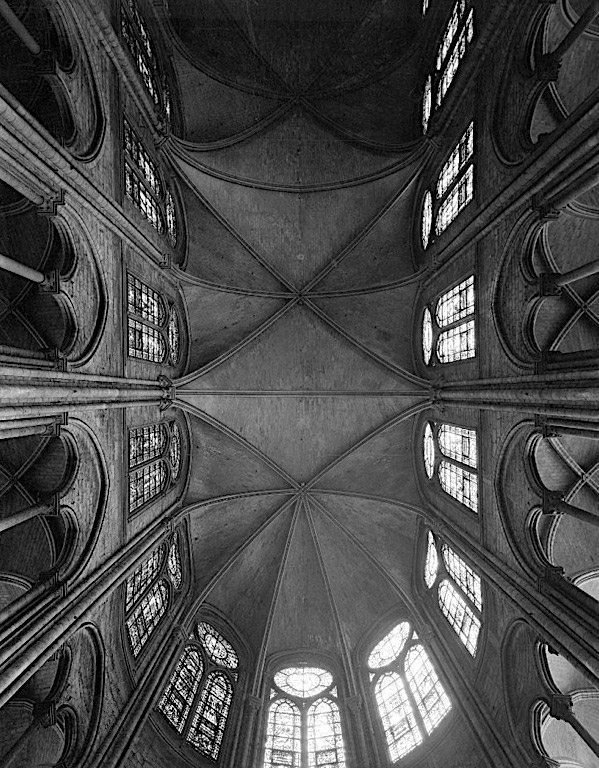
Vaulting of the choir. Photo: Clarence Ward Archive, Arthur Princehorn, photographer, 1932.